Filter by
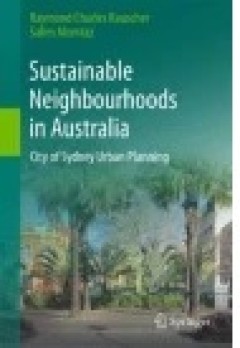
Sustainable Neighbourhoods in Australia
This book examines the planning and implementation of policies to create sustainable neighborhoods, using as a case study the City of Sydney. The authors ask whether many past planning and development practices were appropriate to the ways that communities then functioned, and what lessons we have learned. The aim is to illustrate the many variations within a city and from neighborhood to neigh…
- Edition
- -
- ISBN/ISSN
- 978-3-319-17572-0
- Collation
- XXV, 223
- Series Title
- -
- Call Number
- -
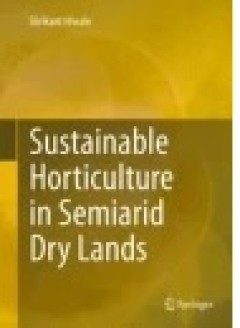
Sustainable Horticulture in Semiarid Dry Lands
This book discusses ways of increasing production/unit area by making full use of the soil and water under the harsh climatic conditions of semiarid areas. This leads to improved sustainability, increased availability of fresh produce, which is vital for human health and higher incomes for small and marginal farmers. Arid and semiarid areas account for almost 70 per cent of the total cropped ar…
- Edition
- -
- ISBN/ISSN
- 978-81-322-2244-6
- Collation
- XXXIV, 393
- Series Title
- -
- Call Number
- -
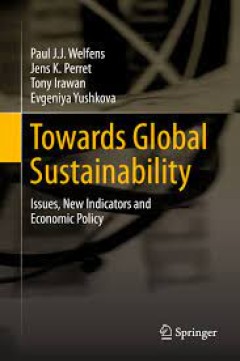
Towards Global Sustainability
This study develops a new indicator for national and global sustainability. The main components of the EIIW-vita indicator are: the share of renewable energy, the genuine savings rate and the relative "green export" position of the respective countries; it is in line with OECD requirements on composite indicators. As green exports are related to technological progress and environmental-friendly…
- Edition
- 1
- ISBN/ISSN
- 978-3-319-18665-8
- Collation
- XV, 164
- Series Title
- -
- Call Number
- -
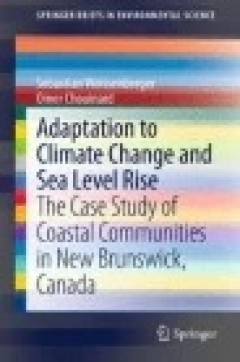
Adaptation to Climate Change and Sea Level Rise: The Case Study of Coastal Co…
The book provides a concise and interdisciplinary outlook on the impacts of climate change on coastal areas and how coastal communities adapt to them. The first chapter analyses how sea level rise, changing ocean conditions, or increased climate variability and the socio-environmental context of the coastal zone leads to vulnerable communities. The second chapter addresses adaptation strategies…
- Edition
- Ed. 1
- ISBN/ISSN
- 978-94-017-9888-4
- Collation
- VI, 100
- Series Title
- SpringerBriefs in Environmental Science
- Call Number
- 551.6 WEI a
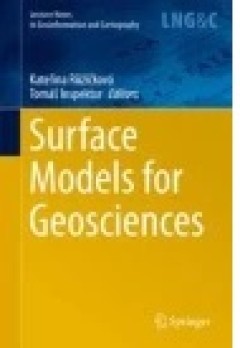
Surface Models for Geosciences
The aim of the conference is to present and discuss new methods, issues and challenges encountered in all parts of the complex process of gradual development and application of digital surface models. This process covers data capture, data generation, storage, model creation, validation, manipulation, utilization and visualization. Each stage requires suitable methods and involves issues that m…
- Edition
- -
- ISBN/ISSN
- 978-3-319-18407-4
- Collation
- XXII, 308
- Series Title
- Lecture Notes in Geoinformation and Cartography
- Call Number
- -
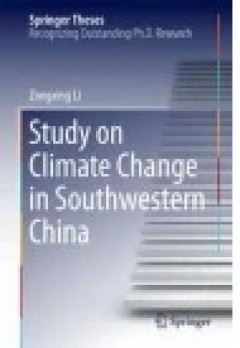
Study on Climate Change in Southwestern China
This thesis confirms many changes, including sharp temperature rise, interannual variability of precipitation, extreme climate events and significant decreases of sunshine duration and wind speed in southwestern China, and systemically explores the action mechanism between large-scale atmospheric circulation systems, the complicated topography, human activities and regional climate changes. Thi…
- Edition
- -
- ISBN/ISSN
- 978-3-662-44742-0
- Collation
- XXVII, 243
- Series Title
- Springer Theses
- Call Number
- -

Environmental and Resources Geochemistry of Earth System Mass Transfer Mecha…
The Earth system consists of subsystems that include the atmosphere, hydrosphere (water), geosphere (rocks, minerals), biosphere, and humans. In order to understand these subsystems and their interactions, it is essential to clarify the mass transfer mechanism, geochemical cycle, and influence of human activity on the natural environment. This book presents fundamental theories (thermodynamics,…
- Edition
- -
- ISBN/ISSN
- 978-4-431-54904-8
- Collation
- 38 b/w illustrations, 125 illustrations in colour
- Series Title
- -
- Call Number
- -

Environmental Project Management Principles, Methodology, and Processes
This book offers a new framework that facilitates the development of more intelligent systems and methods for data analysis and international information sharing, such as the use of satellite imaging and geospatial data to predict changes in weather conditions and shifts in water levels, and to assess the extent of the forest cover remaining on Earth that is visible from space. It brings togeth…
- Edition
- -
- ISBN/ISSN
- 978-3-319-27651-9
- Collation
- 117 b/w illustrations, 32 illustrations in colour
- Series Title
- -
- Call Number
- -

Environmental Photochemistry Part III
This volume builds on the previous two editions, Environmental Photochemistry Part I and Part II, which reflect the diverse range of activities in this highly dynamic research field. The chapters cover fundamental topics, from photocatalyst materials, surface-modified materials, reaction kinetics and reactor modelling, to translational research activities on chemical synthesis, energy conversio…
- Edition
- -
- ISBN/ISSN
- 978-3-662-46795-4
- Collation
- 79 b/w illustrations, 70 illustrations in colour
- Series Title
- -
- Call Number
- -
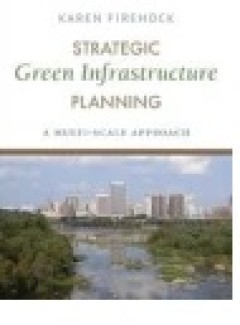
Strategic Green Infrastructure Planning
A practical guide to creating effective plans and then implementing them, Strategic Green Infrastructure Planning presents a six-step process developed by the Green Infrastructure Center in Charlottesville, Virginia. Each step, from setting goals to implementing opportunities, can be applied to a variety of scenarios, customizable to the reader's target geographical location. Chapters draw on d…
- Edition
- -
- ISBN/ISSN
- 978-1-61091-693-6
- Collation
- -
- Series Title
- -
- Call Number
- -
 Computer Science, Information & General Works
Computer Science, Information & General Works  Philosophy & Psychology
Philosophy & Psychology  Religion
Religion  Social Sciences
Social Sciences  Language
Language  Pure Science
Pure Science  Applied Sciences
Applied Sciences  Art & Recreation
Art & Recreation  Literature
Literature  History & Geography
History & Geography